- Home
- Antonia Fraser
Cromwell Page 23
Cromwell Read online
Page 23
The consequent leftward movement of the New Model cavalry caught the eye of Prince Rupert, just as he was riding out on an expedition of reconnaissance, being dissatisfied with the intelligence of his own Scoutmaster. Did he believe the New Model were retreating or did he simply see an opportunity of falling upon them before they were ready? Even at the time his exact motives were obscure, but whatever they may have been Rupert now firmly sent back for the rest of his army. He decided they were to be drawn up on the best ground available, a slope called Dust Hill, ending in a flat and comparatively spacious hollow at the bottom known as the Broad Moor; a further slope on the other side led upwards to the western end of the ridge now occupied by the New Model. The King was soon marching to join the battle array, which ran from the Royalist left wing under Sir Marmaduke Langdale, lying roughly across the present Naseby-Sibbertoft road, via the foot under Lord Astley in the centre, to Rupert’s own horse which touched the thickets on the extreme west of the battlefield known as Sulby Hedges. The Parliamentarian front, facing due north, now sought to match the Royalist lines directly and squarely, not only according to the military convention of the times but also in order to minimize the possible ill effects of the wind “blowing somewhat westwardly” which could otherwise have carried the dangerous musket smoke in their faces.8 Thus the Parliamentary dragoons lined Sulby Hedges; Henry Ireton, newly made Commissary-General and second-in-command of the horse that morning at Cromwell’s request, held the left wing; Skippon and the foot matched Astley, strengthened by some interspersed foot in the centre; and Cromwell faced Langdale on the Parliamentary right.
At this point the Parliamentary General Fairfax decided to take clever advantage of the peculiarity of the dipping lie of the land, and orders were issued to pull back the whole line a hundred yards under the brow of the lower slope, as a result of which a considerable number of Cromwell’s horse were masked from the Royalist gaze in some dead ground. Joshua Sprigge, Fairfax’s chaplain, makes it clear that the manoeuvre was not accidental, but was deliberately intended to conceal the arrangements of their lines – “and yet we to see the form of their battle”. It has also been suggested that Fairfax wanted to avoid discouraging his less experienced troops, notably the foot, by the sight of the enemies’ serried forces.9 Cromwell, the newly appointed Lieutenant-General of the horse, was now busily disposing of his men, not only his own horse on the right but also the dragoons under Okey on the extreme left beyond Ireton. What was his mood on the eve of this crucial encounter, his first in senior command of the New Model? Was he apprehensive as he observed the general readiness of the Royalist array? On the contrary, we know from several testimonies including his own that far from lacking confidence, Cromwell was filled with exultation at the prospect of battle, a mood which even took the extreme form of a sort of wild glee – “a most triumphant faith and joy in him” wrote Sprigge. Another observer went further and recalled a fit of exuberant laughter; Cromwell himself confirmed his mirth: “I could not riding alone about my business, but smile out to God in praises, in assurance of victory, because God would, by things that are not, bring to naught things that are.”10 It was good to feel so sure in the favour of the Lord; indeed this strange picture of Cromwell laughing to himself on the eve of Naseby battle illumines more vividly than any of his more explicitly theological speeches the extent of his trust in the doctrine that right was also might.
In the meantime the actual military situation was much less productive of sanguine expectation. Rupert was determined to attack, and although his “eagerness” was afterwards much criticized and blamed for the disastrous course of the battle, there was much to be said for retaining the element of surprise by charging before the Parliamentary battalia was absolutely complete. It was at least one way of making up for the fact that Rupert had only 9,000 men to the Parliamentary 14,000 and was fatally low in cavalry, only 4,500 to Cromwell’s 6,500 in the absence of Goring. According to John Okey, Colonel of the dragoons, for example, his men were still being allotted their ammunition about half a mile back, and all dismounted, when they perceived the enemy marching “in a very stately way in a whole body towards us, thinking thereby to daunt us, or at least to take us before we were ready to give them entertainment”. At this point Cromwell had a valuable inspiration. He rode up and urged Okey to remount his men with all speed, in order to flank the Parliamentary left wing by lining Sulby Hedges; thus their musket fire would prevent the Royalist right from curving in towards them with a side attack. Okey’s men had only just time to adopt their new positions, dismount once more, hand over their horses to the tenth man who customarily held them, ready their muskets, before “in a little close” the enemy were upon them.11 In short it was a fine-run thing.
It was by now ten o’clock in the morning, and across the two lines waved the respective favours of the two sides – white for Parliament, as at Marston Moor, and beanstalks for the Royalists. At the last moment the Parliamentary line had moved forward slightly, so that both sides were now fully seen by each other. The challenging battle cries of the two parties were also heard as the Royalist line surged forward – “Queen Mary” an Anglicized tribute to Henrietta Maria, for the King’s party, and the equally appropriate “God and our strength” for the New Model. Prince Rupert’s cavalry were soon coming hard at Okey and Ireton on the left led by the Prince himself and his brother Maurice, and Okey’s dragoons bravely emptied their muskets into the advancing waves of charging men and horses. It was just as well that on Cromwell’s instructions they had flanked the hedges, for otherwise it would have been only too easy for the Royalist cavalry to have swung in from the west as he had feared; as it was there was fierce horse-to-horse fighting with Ireton’s men. Ireton in fact outnumbered Rupert’s regiments by three to two, yet despite this advantage he demonstrated the fatal weakness of so many successful cavalry charges, for although he did push back that section of the Royalist horse under Prince Maurice, by doing so he lost touch with his own men. More fatally he failed to regain them but turned to help Skippon and the foot who were under extreme pressure in the centre. Ireton himself was wounded by a pike, slashed in the face and ultimately taken prisoner. Worse still was happening on his own left, where the great charge led by Prince Rupert himself was dynamically successful. Soon the entire proud left wing of the New Model was in fearful disarray, enough to confirm the starkest suspicions of its critics and the deepest scorn of its Royalist mockers.
Meanwhile in the centre, for all the exhaustion of the Royalists and for all their weak numbers – four thousand compared to the seven thousand or more under Skippon – it was the Parliamentary foot which was giving way before the cruel shove of the Royalist pikes. Skippon himself was wounded, his deputy was killed, and only Fairfax’s men stood bravely firm. If any further demonstration was needed of the importance of morale in such battles, the steadfastness of Fairfax’s tried and united men over Skippon’s newly formed regiment – composed of men formerly with Essex and Manchester, two armies which had never got on well – displayed it yet again. The outcome of this muddy and furious contest for Parliament was to say the least of it uncertain. Had another Ireton and another Rupert fought it out on the Parliamentary right as well, then indeed Naseby, “this dismal Saturday” as a Royalist captain called it afterwards in his diary, might have been bright with the joyful colours of victory. “In probability we might have had the day,” wrote Sir Henry Slingsby, who seeing through the battle in the Royalist foot well understood the whole chancy nature of contemporary action.12
On the right however was no Ireton but Cromwell himself, his laughter now stilled, but conviction and determination towards a godly victory redoubled. He had drawn up his regiments in three lines, of which the first consisted of his own loyal men of the Eastern Association, on the right that of Fairfax, on the left that of Whalley, and in the centre Sir Robert Pye. This gave him some 3,500 trained and well-disciplined men in their coats of buff leather (the New Model cavalry, unlike the foot, did no
t affect scarlet during the battle) as well as the Lincolnshire horse of Rossiter. It was Whalley who was the first to engage against the Royalist Langdale, first exchanging pistol fire at virtually point-blank range, and then resorting to their second weapons of short swords. It was to be Langdale who finally gave way, but before this decisive result was reached, Cromwell and Rossiter were already charging down the righthand side of the slope, engulfing the combatants: Langdale now broke as decisively at the assault of Parliament on the left, as Ireton had done for the King’s party on the right.
It was here that Cromwell showed his military genius, the genius which in the ultimate analysis Rupert lacked. Not for his men now the joyful pursuit of the flying Royalist cavalry: while one detachment finished off the rout, passing close by the King as they did so – who bravely thought of leading a counter-charge at the head of his horse guards until one of his supporters dragged him back – Cromwell drew together the rest. He then launched his men like the mighty iron hammer hurled by Thor onto the exposed left flank of the Royalist foot, who in their valiant and virtually successful pressure against the Parliamentary foot had naturally left their flanks unguarded. The combined assault of Cromwell and Fairfax was irresistible. The stalwart Okey, who with his dragoons had been left in fearful trouble and had given themselves up for lost men after the dispersal of Ireton, was quick to appreciate this revolution in their fortunes. He remounted his men and charged into the Royalist foot from the other side. One crowded hour of battle had passed.
Where was Rupert all the time, while victory was snatched from his foot, Langdale was scattered, and even some of Ireton’s men, theoretically broken, had made their way round the back of the battlefield and were joining in again? Never was there more need of a cool head and grasp of tactics in the rapidly worsening Royalist plight. But Rupert was far away, plundering the Parliamentary baggage at Naseby itself, two miles off, swept along on the tide of his triumphant charge, and now like a too powerful wave, left exposed far up the shore, far away from the swelling sea of battle. When he did at last return a grim sight met his eyes of infantry in chaos, and only a few pockets of hope left such as the King and his guards bravely trying to rally the remnants of Langdale’s horse beyond the bottom of the Broad Moor. Meanwhile Cromwell and Fairfax, eager vultures, were drawn up opposite them again only waiting for the foot to join them for one more great sustaining charge.
But it was not to be. The sight of the New Model, drawn up once more in “a second good battalia”, the sound of Okey’s stubborn musketmen firing the first volley, was altogether too much for what remained of the Royalists. For all the frantic exhortations of King and Prince, they melted before the fierce heat of the challenge, and fled back away towards Market Harborough. Now was the time perhaps for Cromwell’s cavalry to be allowed the traditional pursuit in search of plunder; but even here, in face of total victory, they were not allowed to forget their discipline and scatter off towards the enemy wagons. It was left to the Parliamentary foot, not nearly so well disciplined – and of course not under Cromwell’s command – to slake their material lust on the rich pickings of the King’s baggage, while far more revolting instincts were satisfied in a vicious killing of the wretched female camp followers cowering in terror by the wagons. Some were taken to be Irish by their incomprehensible dialects (although it has been plausibly suggested that they were actually Welsh).13 The thought of this ever emotive nationality was enough to inspire primitive English Protestant men to excess; other women were slashed in the faces, the customary judicial marking of a prostitute. In fairness one should make the point that the Royalists themselves had indulged in a holocaust along the same lines at Leicester only two weeks earlier; many of their fellows now died to lie buried under the Rectory cedars or in the churchyard itself at Marston Tressell, in the deadend of Pudding Poke from which they could not escape. The name of Slaughter Field close by still commemorates the true end of Naseby battle for many of the weak and innocent.
Meanwhile at a far distance from Naseby – and even further removed from such sombre reflections – the House of Commons received the glorious news in the shape of letters from Fairfax which the Speaker read aloud. Cromwell wrote in his usual vein in his report of the battle – “Sir, this is none other than the hand of God …” before going on to praise Fairfax for his faithfulness and honour, although he supposed that Fairfax too would attribute everything to the Lord.14 Both Houses of Parliament were given a splendid banquet in the Grocers’ Hall, after which all sang the 46th Psalm. It was a development which the Venetian Ambassador attributed to the relief of the City at being provided at last with the great victory which was needed to end this wearisome war: “the King’s successes were ephemeral, fortune having very quickly changed the scene and reduced his affairs to extremities”. The news also made a sinister impression of Parliament’s strength in France where Queen Henrietta Maria had long been endeavouring to rally support for her husband from her own family. The following Sunday in England there was “great expression in the pulpits”. On 21 June three thousand prisoners taken at Naseby were led triumphantly through the streets of London in positively Roman fashion, having been conveyed thither by John Fiennes, a son of Lord Saye, who fought on the right wing under Cromwell during the battle. The Royalist newspaper Mercurius Aulicus revealed the total confusion of its own side by ceasing publication for several weeks.15
It was not only that here at last was the complete triumph for which all Parliament had prayed, unlike the contested victory of Edgehill, and the confused victory of Marston Moor. But Naseby’s glory also followed on a thorough-going reformation of the Parliamentary military arm, about whose efficacy, in the absence of firm trial, not everyone had shared Cromwell’s faith. The propaganda announcement of the Parliamentary newspaper The Kingdoms Weekly Intelligencer had been considerably more cautious: Cromwell’s new soldiers were a trifle raw, “but a little exercise will make them expert … a good cause and a good heart too, are two good prognosticks of success”. It was Naseby which had shown exactly what reliable prognostics this desirable combination had-proved to be; with such a victory at their disposal there was no need to regret the departure of Manchester and Essex or indeed the general – now obviously beneficial – remodelling of the Army.
The battle of Naseby has always captured the imagination: Naseby was the last major battle of the Civil War in which the King had at least some chance of ultimate victory. Later there were persistent rumours that Cromwell, sustained by stirring memories of the battlefield, had designated it for his own burial ground. A great ship launched during the Protectorate was given its name. An eighteenth-century bishop was moved to admonitory verse by the sight of the historic arena:
There hapless Charles beheld his fortunes crossed
His forces vanquished and his kingdom lost…
Let these sad scenes an useful lesson yield
Lest future Nasebys rise in every field 16
The sad scenes now have the distinction of being marked by two monuments, some miles apart, both purporting to commemorate the battlefield. A magnificent obelisk, erected in 1823 by the “Lord and Lady of the manor of Naseby”, on the Market Harborough readjust outside Naseby itself refers to:
the great and decisive battle … which terminated fatally for the royal cause, led to the subversion of the throne, the altar and the constitution, and for years plunged this nation in the horrors of anarchy and civil war; leaving a useful lesson to British kings never to exceed the bounds of their just prerogative, and to British subjects never to swerve from the allegiance due to their legitimate monarchs.
For all its admirable sentiments, this obelisk is in fact in the wrong place. In 1946 another smaller monument was erected under the auspices of the Cromwell Association, a little way off the Naseby-Silbertoft road; it is inscribed with the somewhat calmer message: “From near this site Oliver Cromwell Led the cavalry charge Which decided the Issue of the battle And ultimately that of the Great Civil War” in what
is the appropriate spot according to the calculations followed here.
It remains to speculate how far the result of Naseby was in fact a foregone conclusion once the New Model was formed – even if it was not generally realized at the time – and to apportion the praise and blame in the great Parliamentary victory. On the first count, the swaying fortunes of the battle show that it was at least possible for the King to have broken Parliament during this particular struggle had it been Langdale who scattered Cromwell instead of vice versa. Although the Parliamentary forces would have had an opportunity to rally and reform once the battle was over, the political effects of a rout upon opinion at London would have been extremely inauspicious for the future of the New Model. On the second count, much credit is due to Fairfax for the successful management of his pre-Naseby campaign so that the King was left virtually unable to avoid a pitched battle at a time when his numbers were severely depleted by the absence of Goring. But within the narrower confines of the action itself, the glory of Naseby goes to Cromwell, this time unadulterated by the claims of the Scots, for his ability to charge, rally and charge again. It was skill well expressed by Clarendon, commenting on the difference between Cromwell and Rupert: “though the King’s troops prevailed in the charge and routed those they charged, they never rallied themselves again in order, nor could be brought to make a second charge again the same day”, whereas Cromwell’s troops, whether they thought they were victorious, or even if they thought they were beaten, were trained to rally again “and stood in good order till they received new orders”.17

 Warrior Queens
Warrior Queens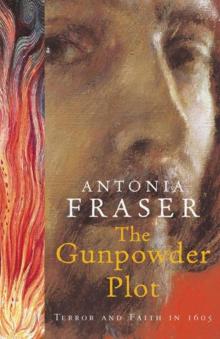 The Gunpowder Plot
The Gunpowder Plot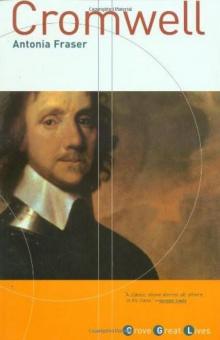 Cromwell
Cromwell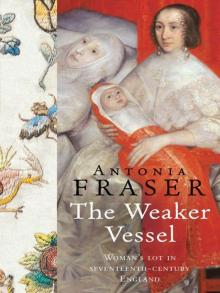 The Weaker Vessel: Women's Lot in Seventeenth-Century England
The Weaker Vessel: Women's Lot in Seventeenth-Century England Marie Antoinette: The Journey
Marie Antoinette: The Journey Oxford Blood
Oxford Blood Your Royal Hostage
Your Royal Hostage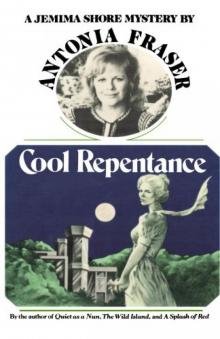 Cool Repentance
Cool Repentance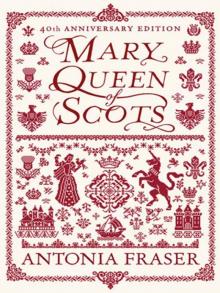 Mary Queen of Scots
Mary Queen of Scots Political Death
Political Death Royal Charles: Charles II and the Restoration
Royal Charles: Charles II and the Restoration My History: A Memoir of Growing Up
My History: A Memoir of Growing Up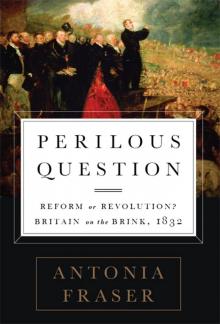 Perilous Question: Reform or Revolution? Britain on the Brink, 1832
Perilous Question: Reform or Revolution? Britain on the Brink, 1832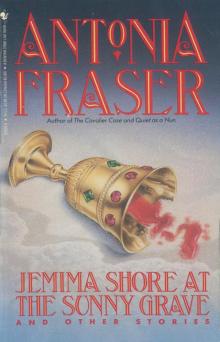 Jemima Shore at the Sunny Grave
Jemima Shore at the Sunny Grave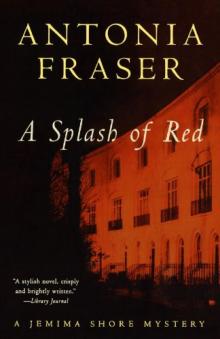 A Splash of Red
A Splash of Red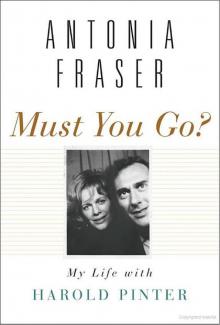 Must You Go?: My Life With Harold Pinter
Must You Go?: My Life With Harold Pinter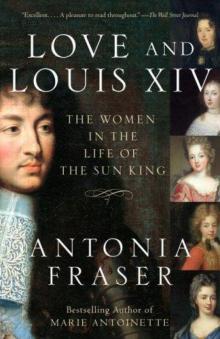 Love and Louis XIV: The Women in the Life of the Sun King
Love and Louis XIV: The Women in the Life of the Sun King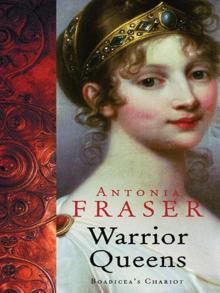 The Warrior Queens
The Warrior Queens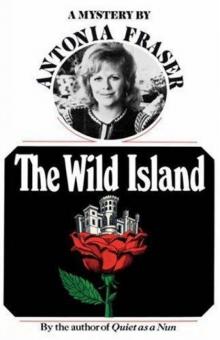 The Wild Island
The Wild Island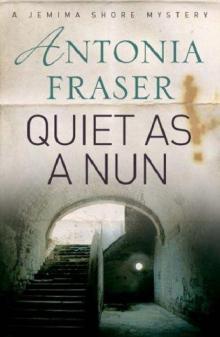 Quiet as a Nun
Quiet as a Nun Perilous Question
Perilous Question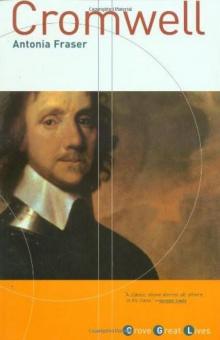 Cromwell, the Lord Protector
Cromwell, the Lord Protector Gunpowder Plots
Gunpowder Plots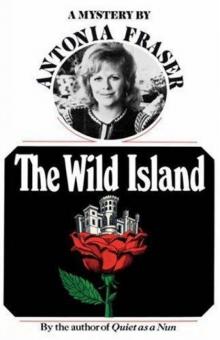 The Wild Island - Jemima Shore 02
The Wild Island - Jemima Shore 02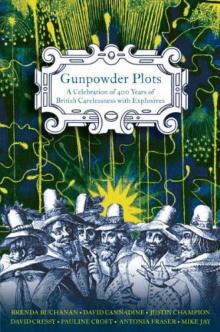 Gunpowder Plots: A Celebration of 400 Years of Bonfire Night
Gunpowder Plots: A Celebration of 400 Years of Bonfire Night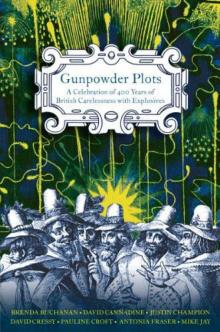 Gunpowder Plots_A Celebration of 400 Years of Bonfire Night
Gunpowder Plots_A Celebration of 400 Years of Bonfire Night Marie Antoinette
Marie Antoinette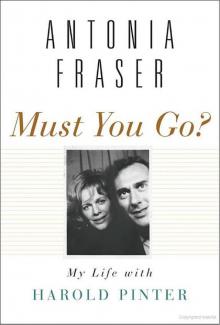 Must You Go?
Must You Go? My History
My History